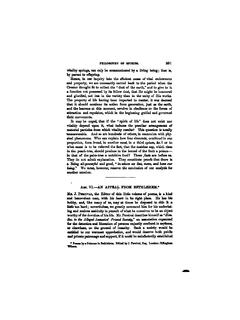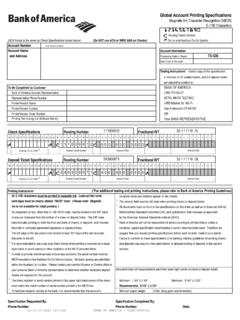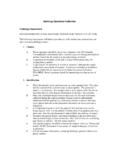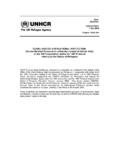Transcription of The ‘Hurt Yourself Less’ Workbook - Andrew Roberts
1 The Hurt Yourself less Workbook 2 By Eleanor Dace, Alison Faulkner, Miranda Frost, Karin Parker, Louise Pembroke, Andy Smith 1998 Eleanor Dace, Alison Faulkner, Miranda Frost, Karin Parker, Louise Pembroke, Andy Smith except First aid advice Dr. J. King GP First published by The National Self-Harm Network PO BOX 16190 LONDON NW13WW ISBN 0 9534027 0 3 3 Dedication: This book is dedicated to those self-harmers who didn't survive, and to all those still surviving. Contents FOREWORD 4 INTRODUCTION 8 WHO IS IT FOR?
2 9 YOU 10 YOUR SELF-HARM NOW 14 LOOKING AFTER YOU AND YOUR INJURY 20 MANAGING OTHER PEOPLE'S RESPONSES 21 YOUR SELF (THE DIFFICULT BIT) 26 THE ROOM - YOU IN YOUR ENVIRONMENT 33 WHEN YOU FEEL LIKE HARMING 46 THE FIRST TIME 49 YOUR INJURY NOTES (CONFIDENTIAL) 53 FOR WORKERS, CARERS AND CONCERNED OTHERS 58 YOU HAVE SURVIVED 60 MOVEABLE/MULTIPLE SECTIONS 61 HEARING VOICES, SEEING VISIONS, OTHER UNUSUAL EXPERIENCES AND SELF-HARM 62 WHERE ARE YOU NOW 1? 72 WHERE ARE YOU NOW 2?
3 73 FIRST AID 75 RESOURCE LIST 77 4 Foreword Self-harm presents health care professionals with a number of complex challenges. It takes us to the heart of the conflict between control and responsibility upon which most professional interventions are based. In addition to this, professional 'talk' about self-harm occurs within a rationalist framework, which disguises a set of moral judgements about the nature of the act. These judgements, almost exclusively negative, deplore the act, and regard it as unacceptable. At the same time, the response of professional agencies is curiously ambiguous.
4 Sometimes, the mental health act is used to take control away from the person, in a (usually) futile attempt to prevent repetitions of the act. On other occasions, the person may be told s/he can only receive help if they agree to take full responsibility for themselves by agreeing to stop harming themselves. These responses place the person who self-harms in a situation of great uncertainty, in which it may be very difficult to predict how helping agencies will respond. It is not surprising, therefore, that people who self-harm frequently have negative experiences of professional interventions, in the GP's surgery, the casualty department, the psychiatric department.
5 This fact is the main reason for the existence of this Workbook . In this respect it is worth noting that this Workbook contains a section on the management of other people's responses to self-harm. It is worth dwelling on the ambiguity of professional responses to self-harm. One way of trying to understand this is to consider the values and judgements that our culture makes about different types of self-harmful behaviours. The first point to make here is that there are many forms of such behaviour, including ritual self-harm, unintentional self-harm, and deliberate self-harm.
6 Ritual self harm includes acts which occur within a set of shared cultural or religious beliefs, within which they token a particular significance or meaning. A distant Western relative of this is the fashion for body piercing and adornment with studs and rings. Unintentional self-harm occurs when a person engages in an activity in which bodily harm arises as a consequence, although this is not the main objective. Examples include smoking tobacco and drinking alcohol for pleasure, and participation in dangerous sports. Intentional self-harm includes a variety of different behaviours with different objectives.
7 These include the taking of overdoses of tablets either with, or without suicidal intent, as well as the self-infliction of cuts, burns and lacerations to the skin. Some people refer to this as self-mutilation, but the fact that it is frequently talked about both popularly and by experts as a category of self-harm, means that it is often confused with the taking of overdoses. From here arises the mistaken assumption that self-mutilation is a form of suicidal behaviour. Self-mutilation rarely has suicidal intent, but serves some other purpose.
8 Psychiatry has attempted to bring the might of DSM-41 down on the problem of self-harm. Although it is not recognised as a psychiatric disorder in its own right, this is not for the want of trying. Pattison & Kahan's (1983) approach to turning self-harm into a psychiatric disorder is worth considering in some detail, because it provides an insight into the judgements and assumptions 1 DSM-4 (Diagnostic and Statistical Manual, fourth edition) is the handbook for the diagnosis and classification of diseases used in America.
9 5 which are associated with the category. They present 56 case histories published in psychiatric journals between 1960 and 1980, and describe a relationship between certain aspects of self-harm, such as its frequency, age of onset, and gender, and psychiatric diagnoses. They also reviewed biological theories of self-harm, which attempt to explain the behaviour in terms of disturbances of chemical transmitters in the brain. This has important implications. If we can explain self-injurious behaviour in terms of disordered brain function, then there is no need to consider other ways of understanding it.
10 Neuroscientific accounts of what psychiatrists call psychosis divorce human experience from interpersonal, social, cultural and political contexts (Thomas, 1997). This also applies to neuroscientific explanations of self-harm. In particular, biological explanations mean that we no longer have to consider the role of the tragically abusive aspects of human relationships. But there is more to it than this. Pattison and Kahan try to extract what they call a 'prototype model' of the self-harm syndrome (Table 1), by comparing self-harm with other types of self-destructive behaviours.






